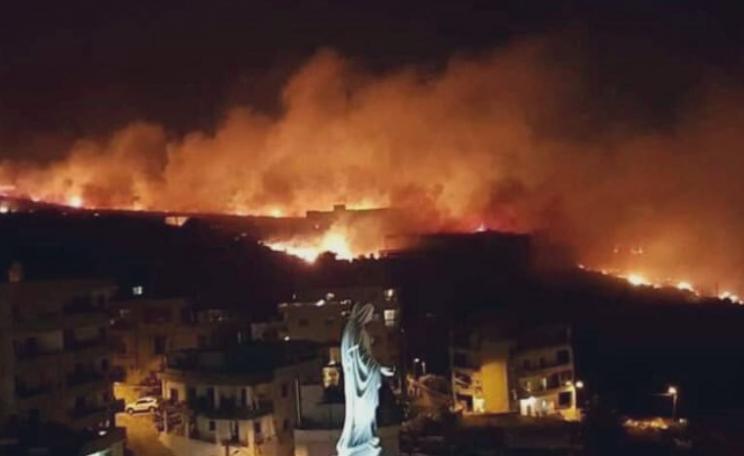0
India’s ambitious renewable energy goals have received a lot of international attention, but coal still provides more than half of India’s commercial primary energy and is expected to remain the dominant fuel in the country till well past 2030.
Currently, more than 65 percent of India's electricity comes from thermal power plants and nearly 85 percent of the country's thermal power plants are coal-based.
Read: Resisting coal in Pakistan's Thar desert
Sristi Jain, a climate activist and mobilizer based in India, said: “Coal generates the majority of India’s electricity and coal-consuming industrial sectors continue to grow, despite the health and environmental consequences it has on the country.”
Polluted cities
Over 1.2 million people died in India due to air pollution in 2017, ccording to the State of Global Air 2019 report.
India has also emerged as one of the world's most polluted countries: the concentration of tiny particulate matter (known as PM2.5) in the country is eight times the World Health Organisation's standard.
Added to this, coal-based power plants continue to be the major source of air pollution in the country, with over 300 coal thermal power plants still violating national emission standards who deadline to comply was December 2017.
An additional 1320 MW thermal power plant is being built in Uttar Pradesh, which is home to seven of the world’s 30 most polluted cities of the world. Construction for the Khurja Super Thermal Power Plant in India’s Uttar Pradesh began in December 2018 and the two unit power plant is expected to have its first phase completed by November 2022 and the second by April 2023.
The move came shortly after India allocated USD 56 million for the implementation of National Clean Air Program, that intends to reduce particulate matter (PM) pollution by 20-30% in at least 102 Indian cities by 2024.
Disaster
In a press statement, Greenpeace India called the 1.5 billion dollar project financially "risky, unnecessary and a health risk to millions," especially when resources for cheaper and cleaner electricity are accessible.
On completion, the power plant is expected to receive its coal from the Amelia Coal Block in the Indian state of Madhya Pradesh, located near the Mahan Forest, one of the oldest and largest sal forests in Asia.
The forest is spread across 1,600 hectares and is home to over 50,000 indigenous people and several endangered wildlife species.
Greenpeace India expects the destruction of up to a million trees in the forest as coal is extracted from Amelia.
Pujarini Sen from Greenpeace India said: “This investment is going to be a disaster in multiple ways – located in the most polluted region in the world, it will destroy one of the oldest forests in the country, displace vulnerable communities dependent on the forest, put enormous pressure on the stressed coal power sector and increase cost of power purchase for struggling distribution companies.”
Despite this, optimistic activists are mobilizing local residents to continue to oppose the project.
Grassroots tactics
The Global Coal Plant Tracker has identified that, in India, at least one 130 coal units have been shelved and 525 cancelled out of the 1,981 projects tracked since 2010, following strong grassroots opposition against their development. To put that in perspective, local activists and protestors in India have been successful in stopping a coal project from being developed more than 33 percent in the past decade.
Research shows that local protestors have, for at least the past decade, been the strongest and most effective - opponents of proposed coal plants as they continue to be directly affected by the intensified air pollution and other negative impacts coal brings to the area.
Sristi said: “The numbers and case studies show Indian local communities that attempt to use grassroots tactics to oppose coal plants have a slightly higher chance of seeing coal plants shelved and cancelled.”
Following pressure by activists in two Indian states, Gujarat and Chhattisgarh (which is also home to the country’s third-largest coal reserves) have also recently announced that they will no longer build any new coal power plants.
Sristi continued: “Opposition is usually stronger and more effective when local media has reported on it. Local residents will continue to mobilize against air pollution, fly ash contamination of groundwater, and the displacement of communities. The government should listen to their valid concerns."
This Author
Rabiya Jaffery is a freelance journalist and multimedia producer covering stories from the Middle East and South Asia. She reports on climate, culture, and conflicts. She tweets at @rabiyasdfghjkl.
Image: Bara Thermal Power Plant, Uttar Pradesh. Biswarup Gangaly, Wikimedia.







